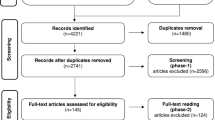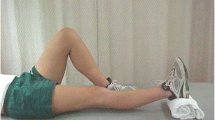Abstract
This article presents a prospective longitudinal study to determine the cut-off values for change scores of DASH, Levine, and Kamath questionnaires to distinguish clinical improvement following carpal tunnel surgery. Fifty-four patients (40 female, 14 male), with positive nerve conduction studies, were prospectively followed up. Three questionnaires (DASH, Levine, and Kamath) were posted to patients at four and two weeks prior to their operation and then six weeks following surgery. A patient global impression of change (PGIC) score was completed for patients to rate the overall change in their symptoms. According to the PGIC, 93% of patients improved. The cut-off values for raw change scores that best define clinically significant improvement following carpal tunnel release were 20.9 for DASH, 0.47 for Levine, and 1.97 for the Kamath questionnaire. This study provides a methodological framework for identifying clinically significant changes following treatment. A questionnaire follow-up of patients is now possible using the data provided.
Résumé
Etude prospective longitudinale dans le but de déterminer les valeurs seuils, les scores DASH, de LEVINE et de KAMATH correspondant à l’amélioration clinique après chirurgie du canal carpien. 54 patients (40 femmes et 14 hommes), ayant un électromyogramme positif ont été suivis de manière prospective. 3 questionnaires (DASH, LEVINE et KAMATH) ont été envoyés aux patients à 4 et 2 semaines avant leur intervention et à 6 semaines après l’intervention. Un score d’impression globale de changement subjectif (PGIC) a été rempli par les patients pour mesurer les changements survenus dans leur symptomatologie. 93% des patients ont été améliorés selon le score PGIC. Les valeurs seuils de changement brut des scores correspondant le mieux à l’amélioration clinique suivant la chirurgie de libération du canal carpien étaient 20.9 pour le DASH, 0.47 pour le LEVINE et 1.97 pour le KAMATH. Cette étude fournit une base méthodologique pour identifier les améliorations cliniques significative après traitement. Le suivi des patients par questionnaire est maintenant possible par l’utilisation des données fournies.
Similar content being viewed by others
References
Amadio PC, Silverstein MD, Ilstrup DM, Schleck CD, Jensen LM (1996) Outcome assessment for carpal tunnel surgery: the relative responsiveness of generic, arthritis-specific, disease-specific, and physical examination measures. J Hand Surg [Am] 21:338–346
Beaton DE, Katz JN, Fossel AH, Wright JG, Tarasuk V, Bombardier C (2001) Measuring the whole or the parts? Validity, reliability and responsiveness of the disability of the arm, shoulder and hand outcome measure in different regions of the upper extremity. J Hand Ther 14:128–146
Changulani M, Okonkwo U, Keswani T, Kalairajah Y (2007) Outcome evaluation measures for wrist and hand—which one to choose? Int Orthop (in press). doi:10.1007/s00264-007-0368-z
Farrar JT, Portenoy RK, Berlin JA, Kinman JL, Strom BL (2000) Defining the clinically important difference in pain outcome measures. Pain 88:287–294
Greenslade JR, Mehta RL, Belward P, Warwick DJ (2004) Dash and Boston responsiveness of an outcome questionnaire? J Hand Surg [Br] 29:159–164
Gummesson C, Atroshi I, Ekdahl C (2004) The quality of reporting and outcome measures in randomized clinical trials related to upper-extremity disorders. J Hand Surg [Am] 29:727–734
Guyatt GH, Juniper EF, Walter SD, Griffith LE, Goldstein RS (1998) Interpreting treatment effects in randomised trials. BMJ 316:690–693
Guyette TM, Wilgis EF (2004) Timing of improvement after carpal tunnel release. J Surg Orthop Adv 13:206–209
Heybeli N, Kutluhan S, Demirci S, Kerman M, Mumcu EF (2002) Assessment of outcome of carpal tunnel syndrome: a comparison of electrophysiological findings and a self-administered questionnaire. J Hand Surg [Br] 27:259–264
Hudak P, Amadio P, Bombardier C (1996) Development of an upper extremity outcome measure: the DASH (disabilities of the arm, shoulder and hand) [corrected]. The Upper Extremity Collaborative Group (UECG). Am J Ind Med 29:602–608
Hurst H, Bolton J (2004) Assessing the clinical significance of change scores recorded on subjective outcome measures. J Manipulative Physiol Ther 27:26–35
Jacobson NS, Follette WG, Revenstorf D (1984) Psychotherapy outcome research: methods for reporting variability and evaluating clinical significance. Behav Ther 15:336–352
Kamath V, Stothard J (2003) A clinical questionnaire for the diagnosis of carpal tunnel syndrome. J Hand Surg [Br] 28:455–459
Kazis LE, Anderson JJ, Meenan RF (1989) Effect sizes for interpreting changes in health status. Med Care 27:S178–S189
Kirshner B, Guyatt G (1985) A methodological framework for assessing health indices. J Chronic Dis 38:27–36
Levine DW, Simmons BP, Koris MJ, Daltroy LH, Hohl GG, Fossel AH, Katz JN (1993) A self-administered questionnaire for the assessment of severity of symptoms and functional status in carpal tunnel syndrome. J Bone and Joint Surg [Am] 75:1585–1592
Miles A, Charlton BG, Bentley P, Polychronis A, Grey J, Price N (2000) New perspectives in the evidence-based healthcare debate. J Eval Clin Prac 6:77–84
Rempel D, Evanoff B, Amadio PC (1998) Consensus criteria for the classification of carpal tunnel syndrome in epidemiologic studies. Am J Public Health 88:1447–1451
Sackett DL, Straus SE, Richardson WS, Rosenberg W, Haynes RB (2000) Evidence-based medicine how to practice and teach EBM, 2nd edn. Churchill Livingstone, London, pp 105–153
Sambandam SN, Priyanka P, Gul A, Ilango B (2007) Critical analysis of outcome measures used in the assessment of carpal tunnel syndrome. Int Orthop (in press). doi:10.1007/s00264-007-0344-7
Stevens JC, Sun S, Beard CM, O’Fallon WM, Kurland LT (1988) Carpal tunnel syndrome in Rochester, Minnesota, 1961 to 1980. Neurology 38:134–138
Testa M (1987) Interpreting quality of life clinical trial data for use in the clinical practice of antihypertensive therapy. J Hypertens 5(suppl):S9–S13
Turk DC (2000) Statistical significance and clinical significance are not synonyms! Clin J Pain 16:185–187
Turk DC, Okifuji A, Sinclair JD, Starz TW (1998) Interdisciplinary treatment for fibromyalgia syndrome: clinical and statistical significance. Arthritis Care Res 11:186–195
Wyrwich KW, Wolinsky FD (2000) Identifying meaningful intra-individual change standards for health-related quality of life measures. J Eval Clin Prac 6:39–49
Author information
Authors and Affiliations
Corresponding author
Rights and permissions
About this article
Cite this article
Amirfeyz, R., Pentlow, A., Foote, J. et al. Assessing the clinical significance of change scores following carpal tunnel surgery. International Orthopaedics (SICO 33, 181–185 (2009). https://doi.org/10.1007/s00264-007-0471-1
Received:
Revised:
Accepted:
Published:
Issue Date:
DOI: https://doi.org/10.1007/s00264-007-0471-1




